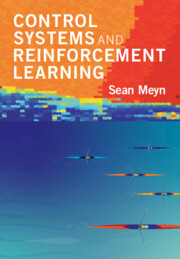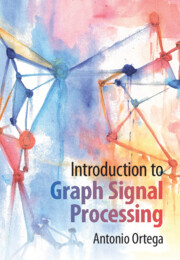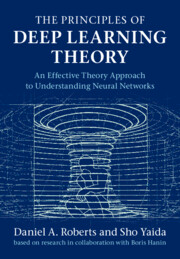Refine search
Actions for selected content:
2327 results in Pattern Recognition and Machine Learning
7 - Gradient-Based Learning
-
- Book:
- The Principles of Deep Learning Theory
- Published online:
- 05 May 2022
- Print publication:
- 26 May 2022, pp 191-198
-
- Chapter
- Export citation
Preface
-
- Book:
- The Principles of Deep Learning Theory
- Published online:
- 05 May 2022
- Print publication:
- 26 May 2022, pp ix-x
-
- Chapter
- Export citation
2 - Neural Networks
-
- Book:
- The Principles of Deep Learning Theory
- Published online:
- 05 May 2022
- Print publication:
- 26 May 2022, pp 37-52
-
- Chapter
- Export citation
ε - Epilogue: Model Complexity from the Macroscopic Perspective
-
- Book:
- The Principles of Deep Learning Theory
- Published online:
- 05 May 2022
- Print publication:
- 26 May 2022, pp 389-398
-
- Chapter
- Export citation
8 - RG Flow of the Neural Tangent Kernel
-
- Book:
- The Principles of Deep Learning Theory
- Published online:
- 05 May 2022
- Print publication:
- 26 May 2022, pp 199-226
-
- Chapter
- Export citation
9 - Effective Theory of the NTK at Initialization
-
- Book:
- The Principles of Deep Learning Theory
- Published online:
- 05 May 2022
- Print publication:
- 26 May 2022, pp 227-246
-
- Chapter
- Export citation
11 - Representation Learning
-
- Book:
- The Principles of Deep Learning Theory
- Published online:
- 05 May 2022
- Print publication:
- 26 May 2022, pp 291-334
-
- Chapter
- Export citation
0 - Initialization
-
- Book:
- The Principles of Deep Learning Theory
- Published online:
- 05 May 2022
- Print publication:
- 26 May 2022, pp 1-10
-
- Chapter
- Export citation
∞ - The End of Training
-
- Book:
- The Principles of Deep Learning Theory
- Published online:
- 05 May 2022
- Print publication:
- 26 May 2022, pp 335-388
-
- Chapter
- Export citation
Index
-
- Book:
- The Principles of Deep Learning Theory
- Published online:
- 05 May 2022
- Print publication:
- 26 May 2022, pp 445-462
-
- Chapter
- Export citation
10 - Kernel Learning
-
- Book:
- The Principles of Deep Learning Theory
- Published online:
- 05 May 2022
- Print publication:
- 26 May 2022, pp 247-290
-
- Chapter
- Export citation

Control Systems and Reinforcement Learning
-
- Published online:
- 17 May 2022
- Print publication:
- 09 June 2022

Introduction to Graph Signal Processing
-
- Published online:
- 09 May 2022
- Print publication:
- 09 June 2022

The Principles of Deep Learning Theory
- An Effective Theory Approach to Understanding Neural Networks
-
- Published online:
- 05 May 2022
- Print publication:
- 26 May 2022
Preface
-
- Book:
- Mathematical Pictures at a Data Science Exhibition
- Published online:
- 21 April 2022
- Print publication:
- 28 April 2022, pp xiii-xvi
-
- Chapter
- Export citation
18 - Group Testing
- from Part Three - Compressive Sensing
-
- Book:
- Mathematical Pictures at a Data Science Exhibition
- Published online:
- 21 April 2022
- Print publication:
- 28 April 2022, pp 149-156
-
- Chapter
- Export citation
Executive Summary
- from Part Two - Optimal Recovery
-
- Book:
- Mathematical Pictures at a Data Science Exhibition
- Published online:
- 21 April 2022
- Print publication:
- 28 April 2022, pp 67-67
-
- Chapter
- Export citation
13 - Quasi-Monte Carlo Integration
- from Part Two - Optimal Recovery
-
- Book:
- Mathematical Pictures at a Data Science Exhibition
- Published online:
- 21 April 2022
- Print publication:
- 28 April 2022, pp 102-112
-
- Chapter
- Export citation
Appendix B - Probability Theory
- from Appendices
-
- Book:
- Mathematical Pictures at a Data Science Exhibition
- Published online:
- 21 April 2022
- Print publication:
- 28 April 2022, pp 259-273
-
- Chapter
- Export citation
8 - Dimension Reduction
- from Part One - Machine Learning
-
- Book:
- Mathematical Pictures at a Data Science Exhibition
- Published online:
- 21 April 2022
- Print publication:
- 28 April 2022, pp 56-64
-
- Chapter
- Export citation
